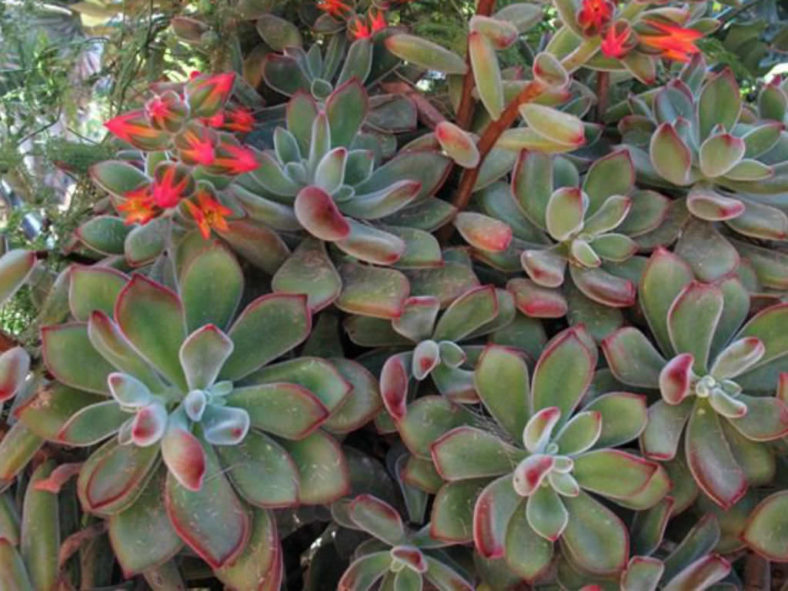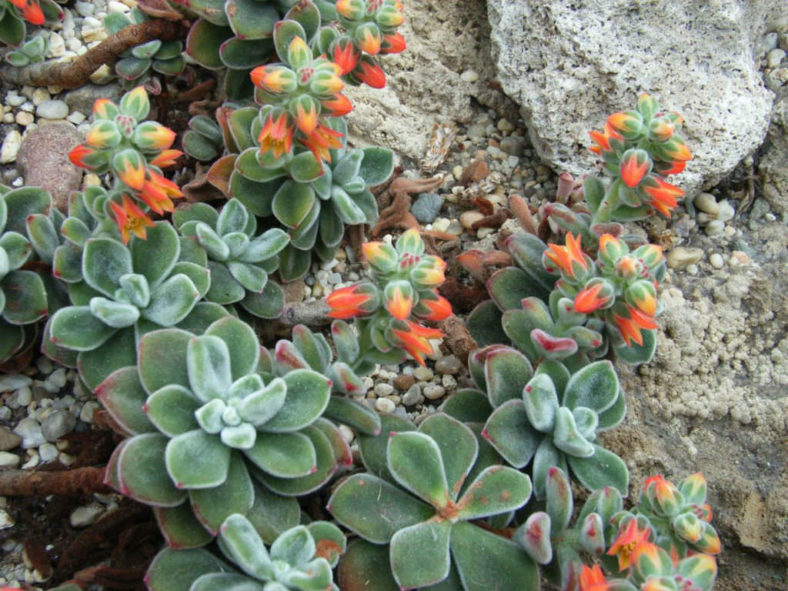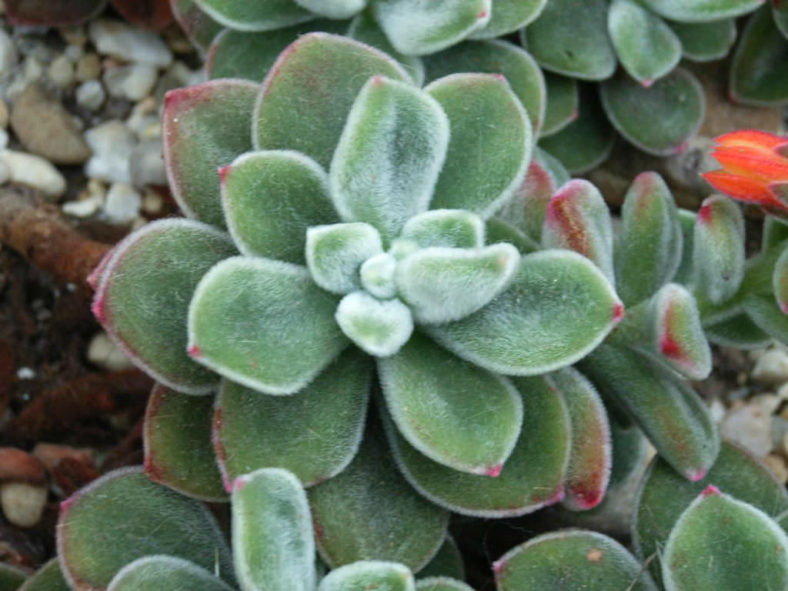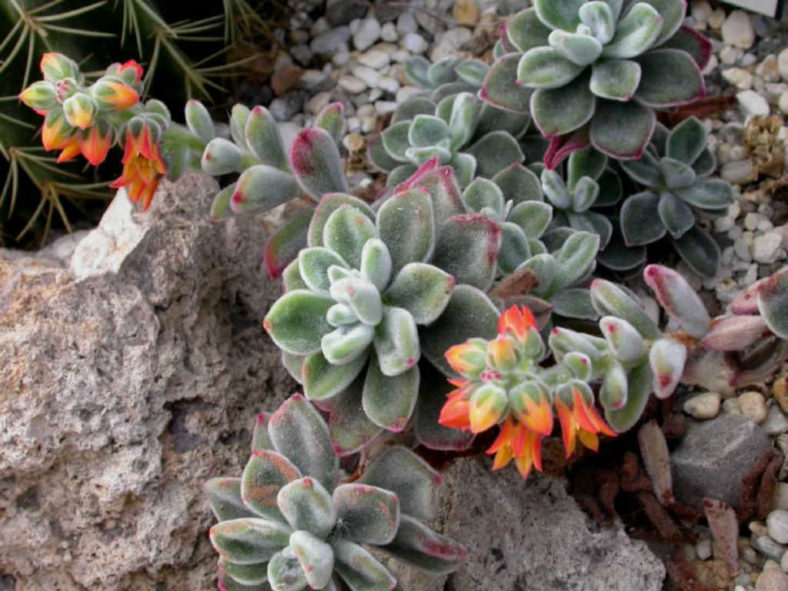Scientific Name
Echeveria coccinea (Cav.) DC.
Common Name(s)
Red Echeveria
Synonym(s)
Cotyledon coccinea, Sedum spicatum
Scientific Classification
Family: Crassulaceae
Subfamily: Sempervivoideae
Tribe: Sedeae
Genus: Echeveria
Etymology
The specific epithet "coccinea" (pronounced "kok-SIN-ee-uh") means "colored or dyed scarlet" and refers to the color of the flowers of this species.
Origin
Echeveria coccinea is native to Mexico.
Description
Echeveria coccinea is a shrubby succulent with branched, semi-sprawling stems that hold rosettes of blue-green leaves covered in silver hairs and sometimes tinged red along the margins. It can grow up to 2 feet (60 cm) tall and 3 feet (90 cm) wide. The leaves can measure up to 4 inches (10 cm) long.
From late winter into spring, relatively large (for an Echeveria), orangish-red flowers with bright yellow stamens appear on leafy inflorescences that can grow up to 1 foot (30 cm) long.

Hybrids of Echeveria coccinea
How to Grow and Care for Echeveria coccinea
Hardiness: USDA hardiness zones 9b to 11b: from 25°F (-3.9°C) to 50°F (10°C).
Most common Echeveria species are not complicated succulents to grow, provided you follow a few basic rules. First, be careful never to let water sit in the rosette, as it can cause rot or fungal diseases that will kill the plant. Additionally, remove dead leaves from the bottom of the plant as it grows. These dead leaves provide a haven for pests, and Echeverias are susceptible to mealybugs. Finally, as with all succulents, careful watering habits and plenty of light will help ensure success.
Repot as needed, preferably during the warm season. To repot a succulent, ensure the soil is dry, then gently remove the pot. Knock away the old soil from the roots, removing any rotted or dead roots. Treat any cuts with a fungicide.
Most Echeverias can be easily propagated from leaf cuttings, although some are better propagated from seeds or stem cuttings. To propagate a leaf cutting, place the individual leaf in potting soil for succulents and cover the dish until the new plant sprouts.
Learn more at How to Grow and Care for Echeveria.
Links
- Back to genus Echeveria
- Succupedia: Browse succulents by Scientific Name, Common Name, Genus, Family, USDA Hardiness Zone, Origin, or cacti by Genus
Photo Gallery


